 |
Figure 1: Sample spectra of supergiant stars with identification of some of the strongest un-blended absorption lines (cf. Table 5) |
Figure 1 shows spectra of A, G and M supergiants to provide identification for some of the strongest un-blended stellar absorption lines and the diffuse interstellar band at 8620 Å (which is sometimes the strongest feature in the spectra of O and B stars. The 8620 Å DIB will be investigated in detail later in this series). Apart from the Paschen and Ca II lines, the A-type spectra are dominated by strong N I absorptions, the G-type spectra present a large set of Fe I lines and the M-type show numerous and deep Ti I absorptions (cf. Table 4).
Figure 2 gives for the type G5 an example of what Figs. 5-28 (available only in electronic form) give for the other spectral types. They constitute the body of the present atlas. The spectra are arranged in luminosity sequences at selected spectral types. If available from the literature (cf. Table 2), the metallicity and the projected rotational velocity are given over each spectrum.
 |
Figure 1: Sample spectra of supergiant stars with identification of some of the strongest un-blended absorption lines (cf. Table 5) |
 |
Figure 2: Luminosity sequence at G5. Metallicity and rotational velocities from the literature (cf. Table 2) |
 |
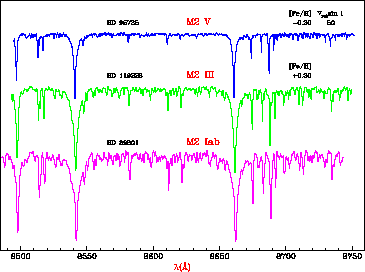 |
Figure 7: Luminosity sequence at M2. Metallicity and projected rotational velocity from literature (see Table 2) |
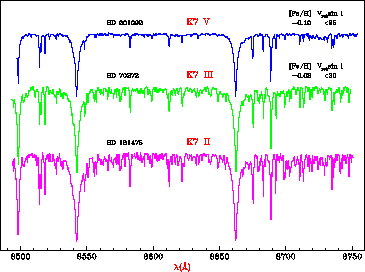 |
Figure 10: Luminosity sequence at K7. Metallicity and projected rotational velocity from literature (see Table 2) |
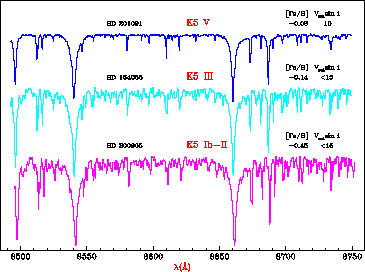 |
Figure 11: Luminosity sequence at K5. Metallicity and projected rotational velocity from literature (see Table 2) |
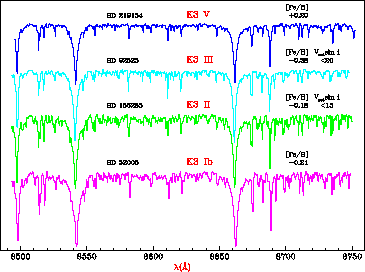 |
Figure 12: Luminosity sequence at K3. Metallicity and projected rotational velocity from literature (see Table 2) |
 |
Figure 13: Luminosity sequence at K0. Metallicity and projected rotational velocity from literature (see Table 2) |
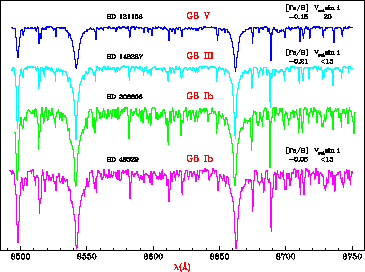 |
Figure 14: Luminosity sequence at G8. Metallicity and projected rotational velocity from literature (see Table 2) |
 |
Figure 15: Luminosity sequence at G2. Metallicity and projected rotational velocity from literature (see Table 2) |
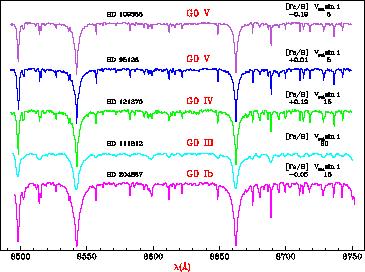 |
Figure 16: Luminosity sequence at G0. Metallicity and projected rotational velocity from literature (see Table 2) |
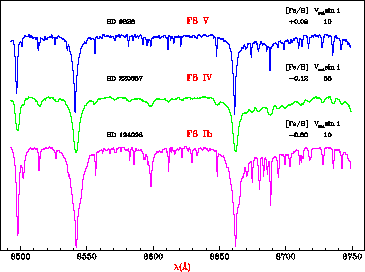 |
Figure 17: Luminosity sequence at F8. Metallicity and projected rotational velocity from literature (see Table 2) |
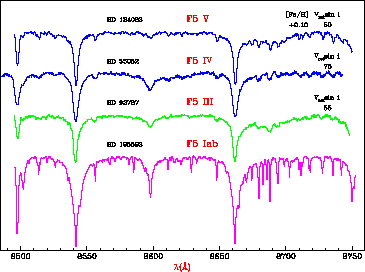 |
Figure 18: Luminosity sequence at F5. Metallicity and projected rotational velocity from literature (see Table 2) |
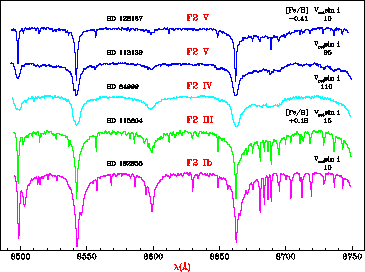 |
Figure 19: Luminosity sequence at F2. Metallicity and projected rotational velocity from literature (see Table 2) |
 |
Figure 20: Luminosity sequence at F0. Metallicity and projected rotational velocity from literature (see Table 2) |
 |
Figure 21: Luminosity sequence at A8-A9. Metallicity and projected rotational velocity from literature (see Table 2) |
 |
Figure 22: Luminosity sequence at A5. Metallicity and projected rotational velocity from literature (see Table 2) |
 |
Figure 23: Luminosity sequence at A3. Metallicity and projected rotational velocity from literature (see Table 2) |
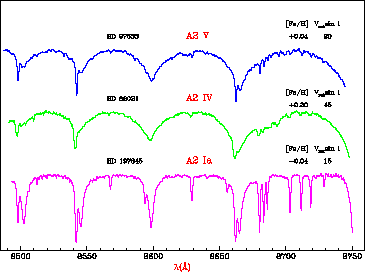 |
Figure 24: Luminosity sequence at A2. Metallicity and projected rotational velocity from literature (see Table 2) |
 |
Figure 25: Luminosity sequence at A0. Metallicity and projected rotational velocity from literature (see Table 2) |
 |
Figure 26: Luminosity sequence at B8. Metallicity and projected rotational velocity from literature (see Table 2) |
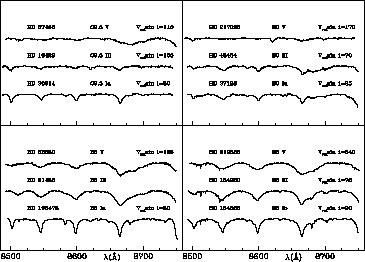 |
Figure 27: Luminosity sequences at O9.5, B0, B3 and B5. Projected rotational velocity from literature (see Table 2) |
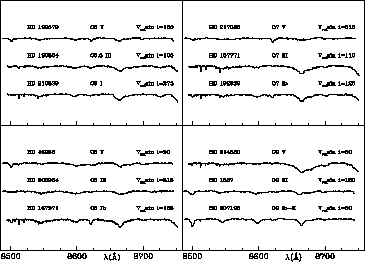 |
Figure 28: Luminosity sequences at O6, O7, O8 and O9. Projected rotational velocity from literature (see Table 2) |
Copyright The European Southern Observatory (ESO)